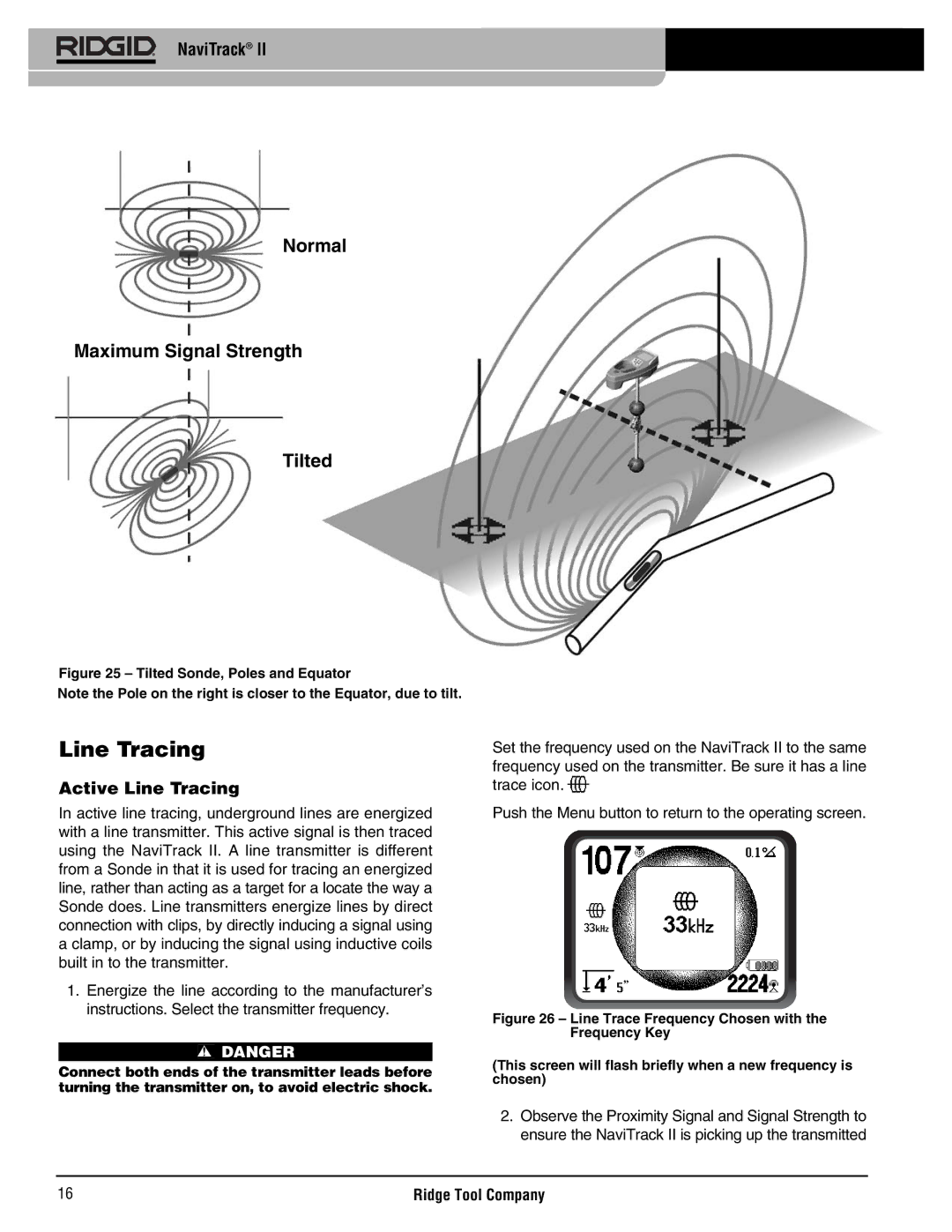
NaviTrack® II
Normal
Maximum Signal Strength
Tilted
Figure 25 – Tilted Sonde, Poles and Equator
Note the Pole on the right is closer to the Equator, due to tilt.
Line Tracing
Active Line Tracing
In active line tracing, underground lines are energized with a line transmitter. This active signal is then traced using the NaviTrack II. A line transmitter is different from a Sonde in that it is used for tracing an energized line, rather than acting as a target for a locate the way a Sonde does. Line transmitters energize lines by direct connection with clips, by directly inducing a signal using a clamp, or by inducing the signal using inductive coils built in to the transmitter.
1.Energize the line according to the manufacturer’s instructions. Select the transmitter frequency.
![]() DANGER
DANGER
Connect both ends of the transmitter leads before turning the transmitter on, to avoid electric shock.
Set the frequency used on the NaviTrack II to the same frequency used on the transmitter. Be sure it has a line trace icon. ![]()
Push the Menu button to return to the operating screen.
Figure 26 – Line Trace Frequency Chosen with the Frequency Key
(This screen will flash briefly when a new frequency is chosen)
2.Observe the Proximity Signal and Signal Strength to ensure the NaviTrack II is picking up the transmitted
16 | Ridge Tool Company |
